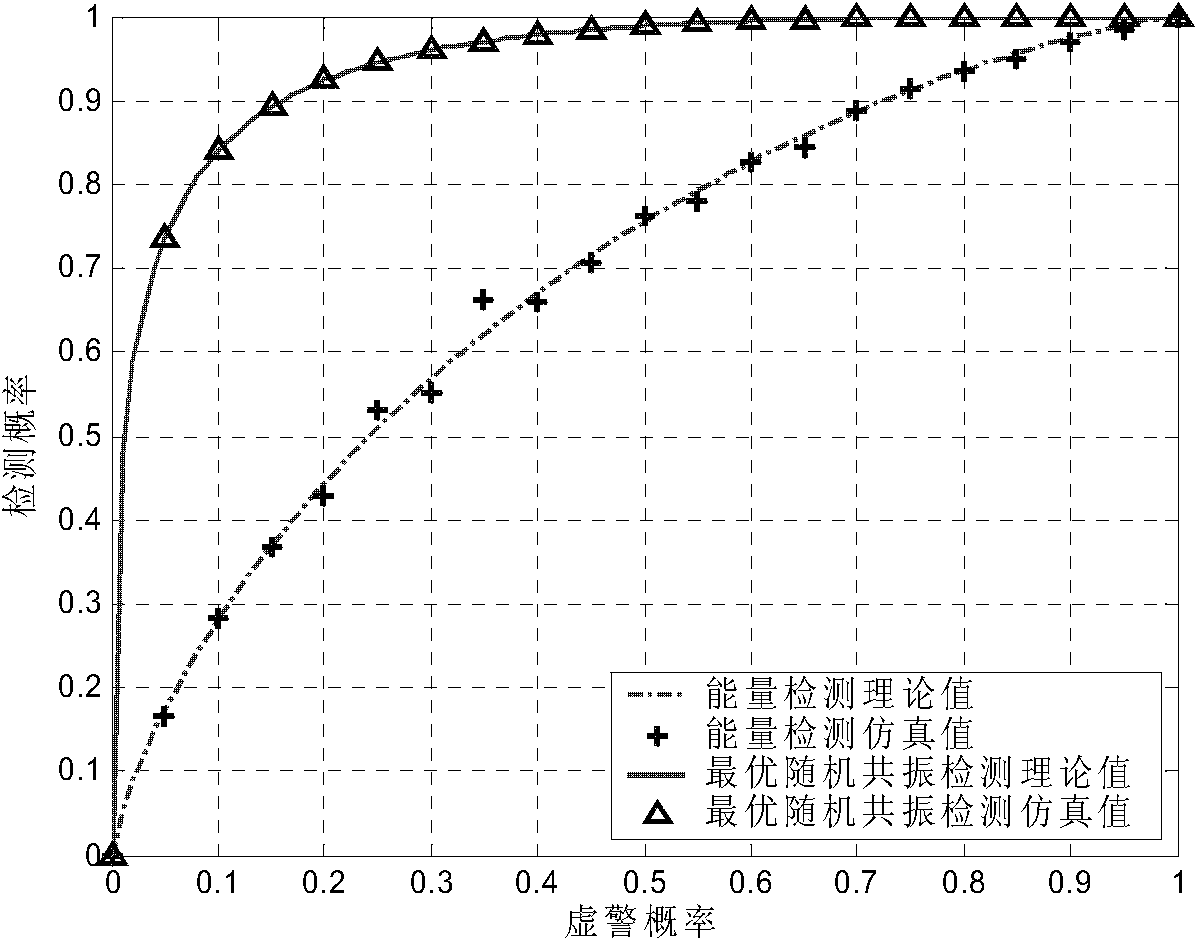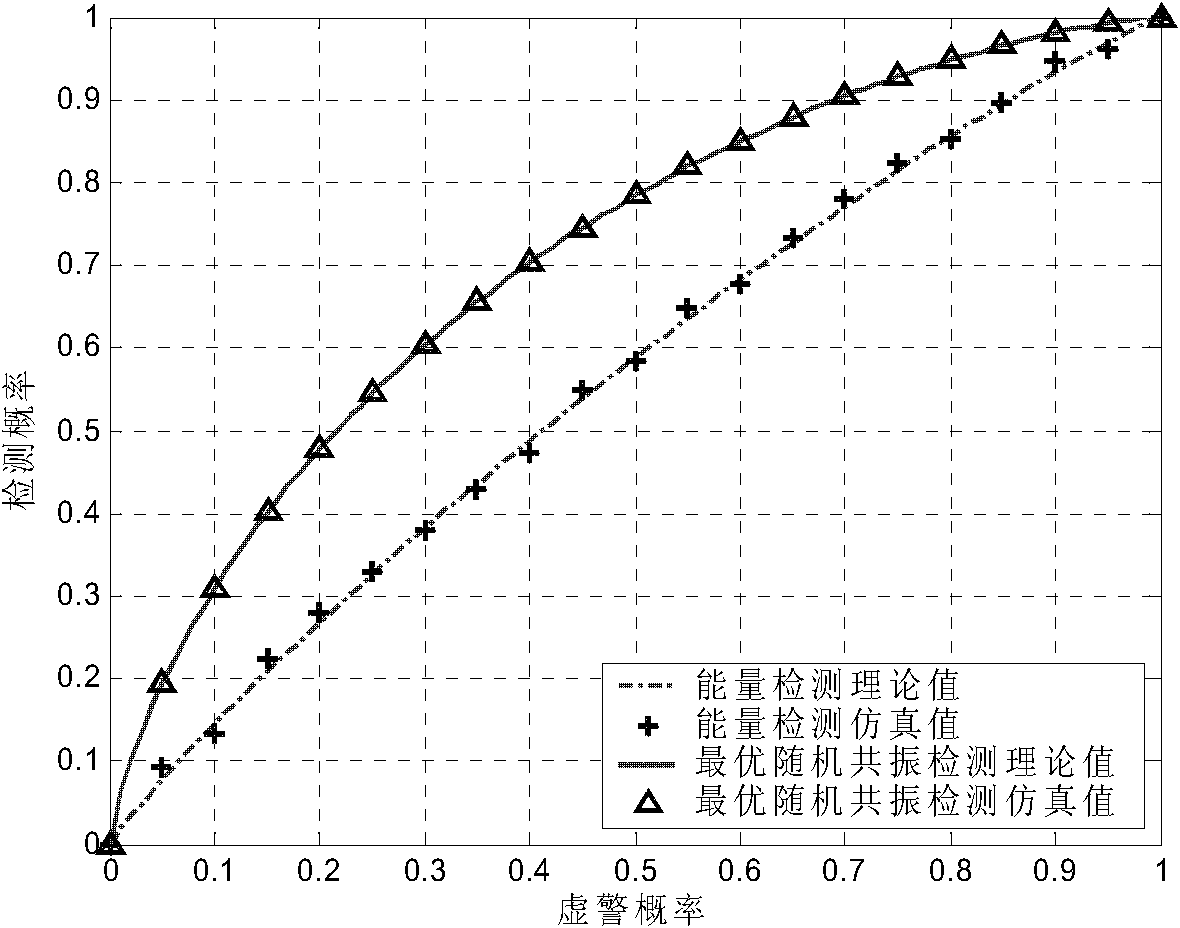Bistable optimal stochastic resonance single-frequency weak signal detection method based on frequency conversion
A weak signal detection and stochastic resonance technology, applied in the field of signal processing, can solve problems such as limited application range, poor practicability, high computational complexity, etc., and achieve good feasibility and practicability, less environmental impact, and computational complexity low effect
- Summary
- Abstract
- Description
- Claims
- Application Information
AI Technical Summary
Problems solved by technology
Method used
Image
Examples
Embodiment
[0034] This embodiment is a QPSK system with a carrier frequency of 10 5 Hz, then the angular frequency ω s =6.28×10 5 rad / s, the time domain signal is represented by cosine, the signal phase The additive noise in the channel is Gaussian white noise with zero mean.
[0035] This embodiment includes the following steps:
[0036] In the first step, set the target angular frequency as ω s The single-frequency received signal r(t) with additive noise and the local signal cos(ω s t+2πΔf t) is multiplied for frequency conversion to obtain the received signal r(t)cos(ω s t+2πΔf t), where: r(t)=Acosω s t+n(t), A is the amplitude of the single-frequency received signal r(t), n(t) is a mean value of 0, and the variance is σ n 2 The additive noise of , ω s is the angular frequency of the single-frequency received signal r(t), and Δf is the set frequency offset.
[0037] In this embodiment, A=1, Δf=0.2Hz.
[0038] In the second step, the frequency-converted received signal r(t)c...
PUM
 Login to View More
Login to View More Abstract
Description
Claims
Application Information
 Login to View More
Login to View More - R&D
- Intellectual Property
- Life Sciences
- Materials
- Tech Scout
- Unparalleled Data Quality
- Higher Quality Content
- 60% Fewer Hallucinations
Browse by: Latest US Patents, China's latest patents, Technical Efficacy Thesaurus, Application Domain, Technology Topic, Popular Technical Reports.
© 2025 PatSnap. All rights reserved.Legal|Privacy policy|Modern Slavery Act Transparency Statement|Sitemap|About US| Contact US: help@patsnap.com



